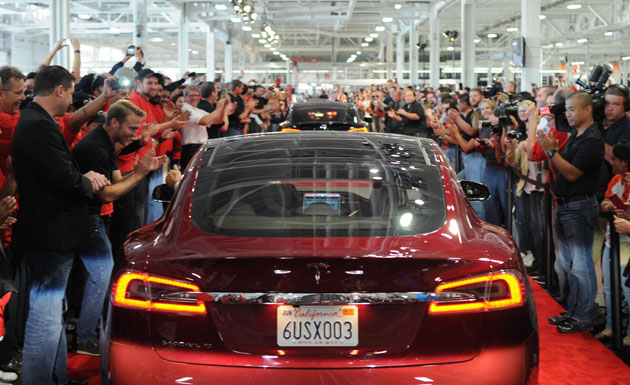| 1941 |
During the Second World War, Congress sinks nearly $5 billion (in 2013 dollars) into radar development. The staff of Bell Labs, a major recipient, nearly doubles to 9,000.  |
| 1945 |
University of Pennsylvania researchers contracted by the Army build the first general-purpose electronic computer. It is 1,440 times faster than a calculator, weighs 30 tons, and fills a 30-by-50-foot room. 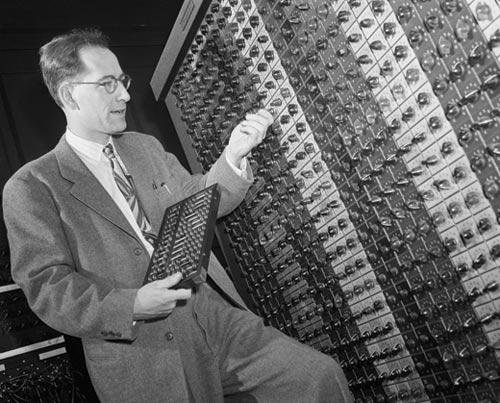 |
| 1951 |
The military commissions a nationwide computer network to help detect and shoot down enemy aircraft. It is the first system to use cathode ray tube screens, magnetic-core RAM, and an early touch screen.
|
| 1953 |
The Pentagon funds Sylvania’s Electronic Defense Lab to develop microwave and satellite communications technologies. |
| 1955 |
The Atomic Energy Commission hires Remington Rand to build the first supercomputer for the Lawrence Livermore National Laboratory; IBM is later hired to build one for the National Security Agency and another for what is now Los Alamos National Laboratory. |
| 1958 |
The Pentagon establishes the Advanced Research Projects Agency, or ARPA (now DARPA). |
| 1963 |
Bankrolled by ARPA, the nonprofit Stanford Research Institute develops bit-mapped screens, the first mouse, hypertext, and early iterations of a graphical user interface. 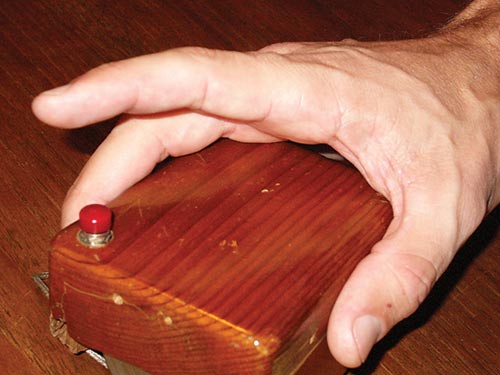 |
| 1969 |
The Pentagon creates a decentralized computer network to safeguard American data from Soviet attack. The result is ARPANET, the foundation for the internet. |
| 1971 |
With the help of numerous ARPA-trained researchers, Palo Alto research lab Xerox PARC goes on to develop a modern graphical user interface, the laser printer, and networking technology. |
| 1973 |
Military researchers invent GPS, the basis for smartphone navigation and location-based services. |
| 1976 |
Apple is founded in a Cupertino garage; two years later, a federally backed fund invests $500,000 in the startup. |
| 1984 |
The first Macintosh debuts—Apple sells 50,000 units in three months. 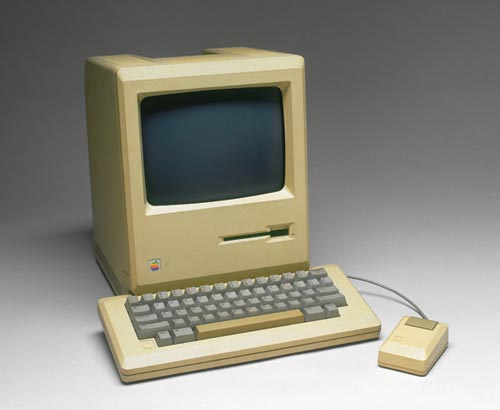 |
| 1989 |
Tim Berners-Lee, a researcher at the European government physics collaborative known as CERN, proposes HTML, the code web browsers use to render pages. |
| 1990 |
The DOE launches the Human Genome Project, a $3.6 billion undertaking, to sequence the genome. It spawns a biotech revolution and numerous companies. Estimated economic impact: $796 billion. |
| 1991 |
University of Minnesota researchers create Gopher, the protocol used to navigate the internet before web browsers became popular. |
| May 1992 |
The Supreme Court rules that a state may only collect sales tax if the seller has a physical connection to that state—a huge subsidy for web-only retailers. |
| Jun. 1992 |
A University of Illinois-Chicago lab unveils the first virtual-reality environment. |
| 1993 |
Marc Andreessen, an undergrad working at the National Center for Supercomputing Applications, unveils Mosaic, the most advanced web browser to date, before leaving to launch Netscape. Internet Explorer, Firefox, and Chrome rely on key Mosaic design features to this day.
|
| Apr. 1998 |
Stanford grad students Sergey Brin and Larry Page publish a paper describing their Google prototype—developed with funding from the National Science Foundation, DARPA, and NASA. 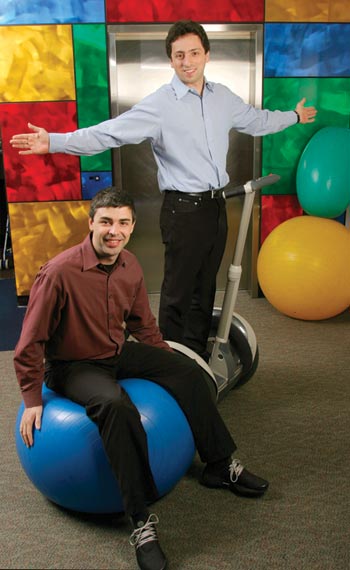
Larry Page and Sergey Brin.
|
| May 1998 |
Bill Gates on PCs: “There isn’t an industry in America that is more creative, more alive, and more competitive. And the amazing thing is that all this happened without any government involvement.” |
| Jun. 1998 |
The Census Bureau hands database management firm Oracle a five-year, $20 million contract. |
| 2001 |
The first iPod is released.  |
| 2004 |
Microsoft secures $305 million worth of tax breaks, credits, and exemptions from Washington state. |
| Aug. 2004 |
Nanosolar, the inventor of cheap, efficient, thin-film solar cells, wins a $10 million DARPA contract. |
| Jan. 2007 |
Lenoir, North Carolina, woos a Google data center with tax breaks worth $212 million over 30 years—more than $1 million for each job Google hopes to create. |
| Jan. 2007 |
The iPhone debuts. |
| Aug. 2007 |
ARPA-e is created to advance “high-potential, high-impact energy technologies that are too early for private sector investment.” |
| Sep. 2009 |
The solar-panel maker Solyndra gets a $535 million DOE loan. The company goes bankrupt two years later after plummeting prices on conventional panels undermine its business model. 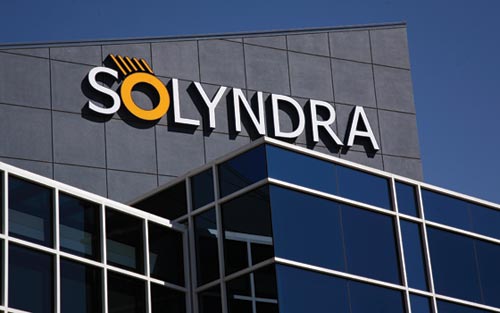
|
| Jan. 2010 |
Tesla Motors receives its preapproved $465 million DOE loan. It pays it back in three years. |
| Apr. 2011 |
Facebook opens its first data center in Prineville, Oregon, and gets a $42 million income, property, and excise tax holiday. |
| Apr. 2011 |
When tech companies threaten to flee the city, San Francisco enacts a “Twitter tax break” worth more than $20 million. |
| May 2011 |
Motorola Mobility (shortly before becoming a Google subsidiary) agrees to remain in Illinois in exchange for state tax breaks valued at more than $100 million. |
| Jun. 2011 |
At a meeting of the Cupertino City Council, Steve Jobs is asked whether Apple would provide the city with free wifi. Jobs responds: “If we can get out of paying taxes, I’ll be glad to put up wifi.” |
| Aug. 2012 |
After Apple announces a new $1 billion data center in Reno, Nevada slashes its tax burden by $89 million over 10 years, the largest such break in state history. |
| Jul. 2013 |
Google curries political favor by hosting a DC fundraiser for climate-change-denying GOP Sen. Jim Inhofe of Oklahoma (where the company runs a wind-powered data center). Environmentalists flip out. |
| 2013 |
San Francisco is projected to spend at least $22 million hosting the America’s Cup at the behest of Oracle’s Larry Ellison, whose insistence on racing temperamental $8 million boats helps drive 10 of 14 competitors out of the race before it even begins. Despite being docked for cheating, Oracle comes back to beat New Zealand in the finals, retaining its title along with hosting rights for the next series of races. |


